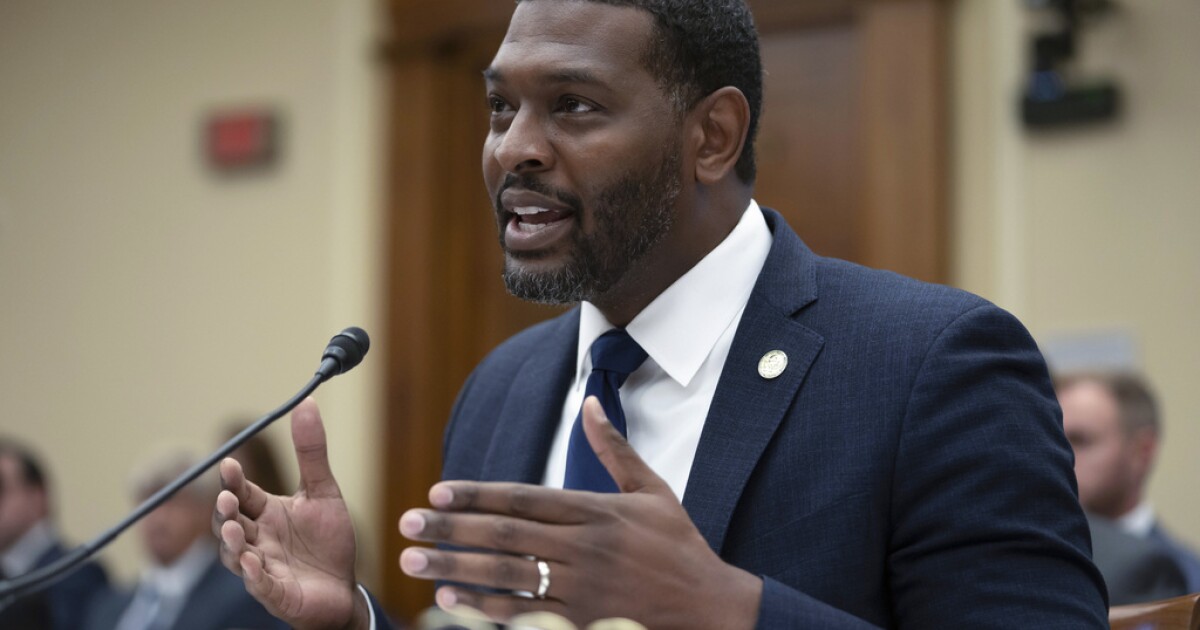

The Environmental Protection Agency finalized a rule Saturday establishing limits on methane pollution from the oil and gas industry, completing the first major climate rule from the Biden administration.
It comes as the United States seeks to paint itself as an environmental champion during the world’s largest climate conference.
BIDEN MAY HAVE DISCOVERED THE REASON HIS ECONOMIC MESSAGE IS FALLING FLAT
The rule, set to be announced at COP28 in Dubai, United Arab Emirates, would aim to prevent an estimated 58 million tons of methane emissions from escaping into the atmosphere between 2024 and 2038, or the equivalent of 1.5 billion metric tons of carbon dioxide, according to EPA officials. Methane, a major component of natural gas, traps 80 times more heat than carbon dioxide over a 20-year period and accounts for roughly a third of global warming since the Industrial Revolution.
“We’ve crafted these technology standards to advance American innovation and account for the industry’s leadership in accelerating methane technology,” EPA Administrator Michael Regan said. “Thanks to robust public feedback and engagement with states, Tribes, companies, and organizations, we are finalizing this historic action to reduce climate pollution, protecting people and the planet.”
The finalized rule would build on previous proposals introduced in 2021 and 2022 by the Biden administration, which goes further than Obama-era regulations by tackling the seepage of methane from oil and gas infrastructure.
More specifically, the finished provision would phase-in requirements eliminating routine flaring — the practice of disposing large, unwanted amounts of natural gas during crude oil extraction — produced by new wells. The requirements would gradually be enacted over a span of two years to allow time for industry groups to plan and enact the rule, according to EPA officials.
The new rule would also provide some flexibility for industry folks to permit flaring from existing wells that do not “emit significant amounts of emissions,” with EPA officials reasoning that the costs to regulate flaring from the wells overshadow the benefits of emission reductions.
Agency officials mentioned finalizing requirements for routine monitoring of methane leaks from well sites and compressor stations and establishing zero-emission standards for equipment such as process controllers and pneumatic pumps. Storage tanks will also be regulated through emission standards.
The new provision also would enact a “Super-Emitter Program,” which allows third-party organizations to collect data and identify where large plumes of methane are produced due to venting or equipment failures, and help oil and gas companies to address those emissions. While the program was introduced in the previous version of the rule, the finalized provision would strengthen the EPA’s oversight of the program. The large masses of methane, otherwise known as “super emitters,” account for almost half of methane emissions from the oil and gas sector.
Promulgated under the Clean Air Act, the measure would require states to establish plans for implementing the standards regulating existing sources of methane, and would give them two years to submit a proposal to the EPA.
Environmentalist groups cheered the new rule, stressing that the new rule would strengthen climate and health protections for communities living near industrial zones.
“As the world gathers to tackle the climate crisis, the U.S. now has the most protective methane pollution limits on the books,” said Fred Krupp, president of the Environmental Defense Fund. “With other countries also zeroing in on methane as a key climate risk, it’s a signal to operators worldwide that clean-up time is here.”
Oil major BP welcomed the rule in a statement included in the announcement.
“A well-designed rule will help drive material methane emission reductions this decade and beyond,” said Orlando Alvarez, chairman and president BP America. “In the spirit of COP28, input from a broad range of stakeholders makes for more durable and effective policies. We congratulate the Administration on this important milestone and look forward to working together on the next phases of implementation.”
But, don’t expect other fossil fuel groups to employ the same attitude. Trade groups that include the American Petroleum Institute, the American Exploration & Production Council, and the Independent Petroleum Association of America submitted comments to EPA in October warning the agency of a “potentially high risk for inconsistent methodologies or reporting structures” between rules regulating methane from other regulatory agencies.
CLICK HERE TO READ MORE FROM THE WASHINGTON EXAMINER
The groups also raised concerns with the super-emitter program, arguing that the agency does not have the authority to allow third-party organizations to generate information that triggers regulatory requirements for affected facilities. The groups had asked for further clarification on who might qualify as a “third party.”
During a call with reporters, EPA officials stated that the third-party organizations would be certified by the agency.





